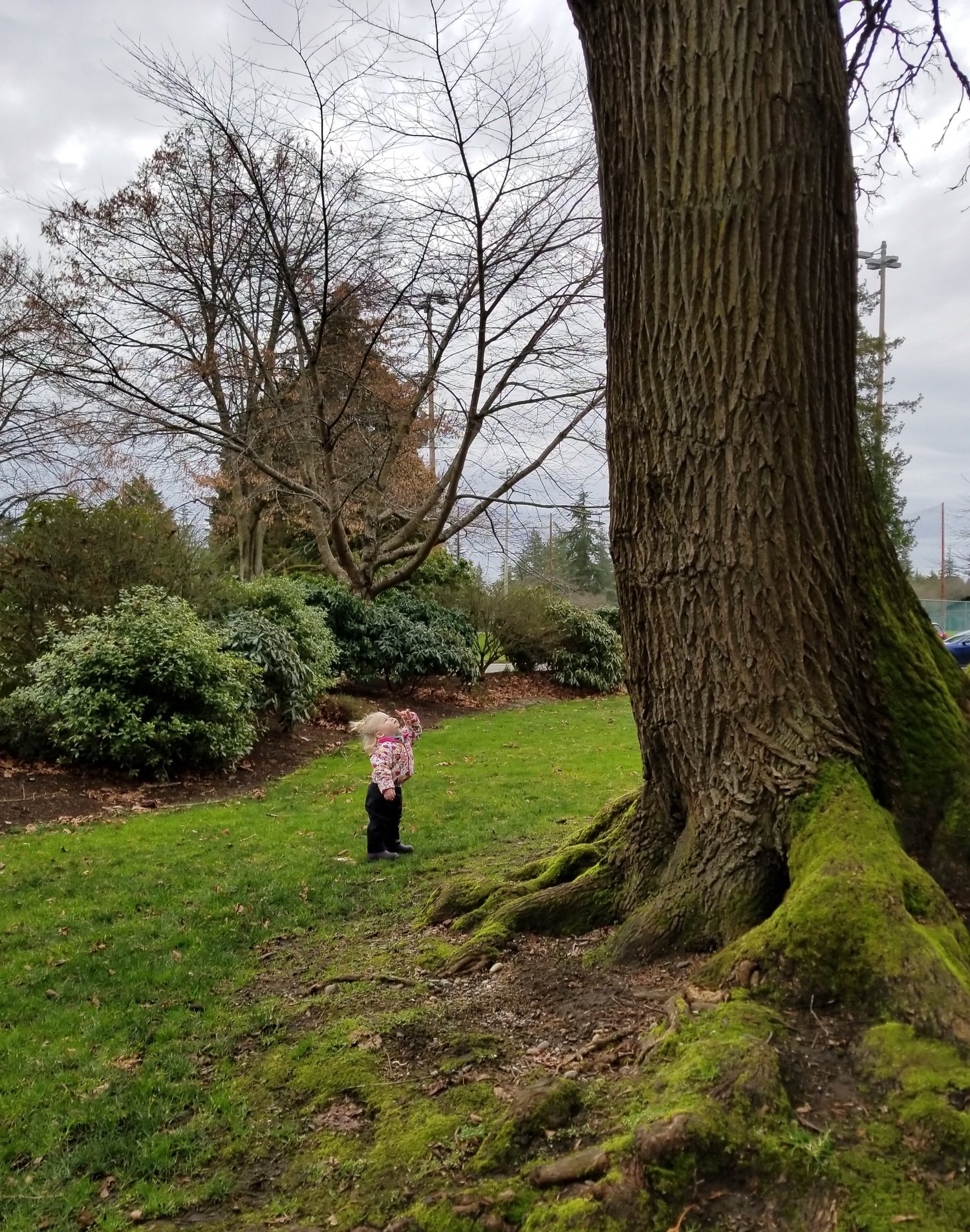When taking a nature walk, it’s clear that trees provide kids with much of the wonder they find in the natural world. Trees drop the acorns and leaves that our children love to collect. They offer the sticks for walking or playing with. And their craggy roots, bark, odd holes and growths inspire awe and curiosity. Even more, they motivate a similar feeling in us adults, too. The trees standing high above our heads eloquently illustrate to all ages just how small we are in this big, beautiful world. And they remind us of our connection to the earth, and all of nature around us. That’s why, this winter season, Tinkergarten is focusing on trees.
In each of our classes across the nation, we picked a friend tree. We do so in the hopes that children and adults could really get to know a tree and, in doing so, plant a seed of curiosity and start to nurture the natural connection humans have with these amazing plants. Because trees are truly amazing, far beyond the natural play they provide outdoors.
Trees are poems that the earth writes upon the sky. — Kahlil Gibran
Trees ground us.
With their roots stretching deep beneath our feet, and their trunks and branches reaching high into the sky, trees ground us. They help us understand and adjust to the environment in which we live. They provide us with a sense of place when we walk out the door, whether they be evergreens in Vermont, palms in Florida or redwoods in California. And kids pick up on that. That’s why trees make such a great anchor for a classroom, especially an outdoor one like our classrooms at Tinkergarten.
Trees are the most natural teacher.
But trees do much more than provide us with a sense of place, they’re amazing teachers, too. Science tells us that
trees have been around for as long as 400 to 450 million years, and individual trees grow slowly, gathering wisdom season after season. So, they have a lot of knowledge -- and yes, they do retain information just like we do.
Observing trees is one of the best ways for children to learn about the cycle of life. The circular nature of life is a complex concept for young minds to fully take in, but being able to see examples of it in the natural world provides them direct experience in the concept that they can easily formalize later on.
For example, trees offer kids an easy way to understand the cycle of the seasons. In some parts of the country, the seasons are clearly marked in the trees. The changing colors of the leaves in the fall, the bare branches in the winter, and the new buds in the spring can provide children with a beautiful example of the cycle of life -- and it’s one they can watch and learn from year after year. In other regions, the cycle might be less obvious, but with just a bit of careful observation of flowers, fruits or even who is nesting in the trees, these lessons are still right there.
Trees are amazing examples of persistence.
Trees can teach us about persistence as well, which is a particularly invaluable lesson during the winter months for our kids. The book The Hugging Tree by Jill Neimark perfectly illustrates that. The story is about a tree growing alone on a cliff by the sea. Despite the tree’s difficult habitat, she survives and thrives through her own resilience and persistence -- and with the help of a little boy. The story teaches us that persistence doesn’t have to be a solitary act, and also that trees at their very core are designed to adapt, endure and persist until the end.
The story teaches us another invaluable lesson about trees: they can be a friend to our kids, and we can be a friend to them as well. And that’s why we feel it’s so important to intentionally connect with the trees around us now.
Connect with a special tree.
- With your family, get connected with the trees in your life. Learning about trees can start small, and grow as your kids do.
- First, pick a special tree and get to know your tree through multiple senses. Get up close and feel it, listen to its leaves rustle, and get a sense of what its bark, leaves, flowers or fruits smell like.
- Give the tree a name based on its special features and what you love most about it.
- Measure its girth by deciding how many of you it takes to hug your tree, or find out how much rope it takes to encircle its trunk.
- Visit the tree throughout the year and point out what’s different about it and what’s the same.
- Do some research. Get to know the scientific name for the tree and learn something special about it. Download a free app like LeafSnap or Virginia Tech Tree ID to help you easily identify trees by their leaves, fruits and other features.
Along the way, find an hour to watch Judi Dench’s documentary about trees, called My Passion for Trees. Her unapologetic love, knowledge and dedication to her grove of trees is a wonderful reminder that nature is always a good place to put your heart. Plus, when you begin to fully see and appreciate the sophistication of trees, you’ll fall even more in love with them. And if more people could feel the way she does about trees, then more people would know the importance of protecting them and their habitat -- and the planet would be better of, for ourselves and for our children. What better to do than plant that seed of love in our kids when they are sprouts?!
